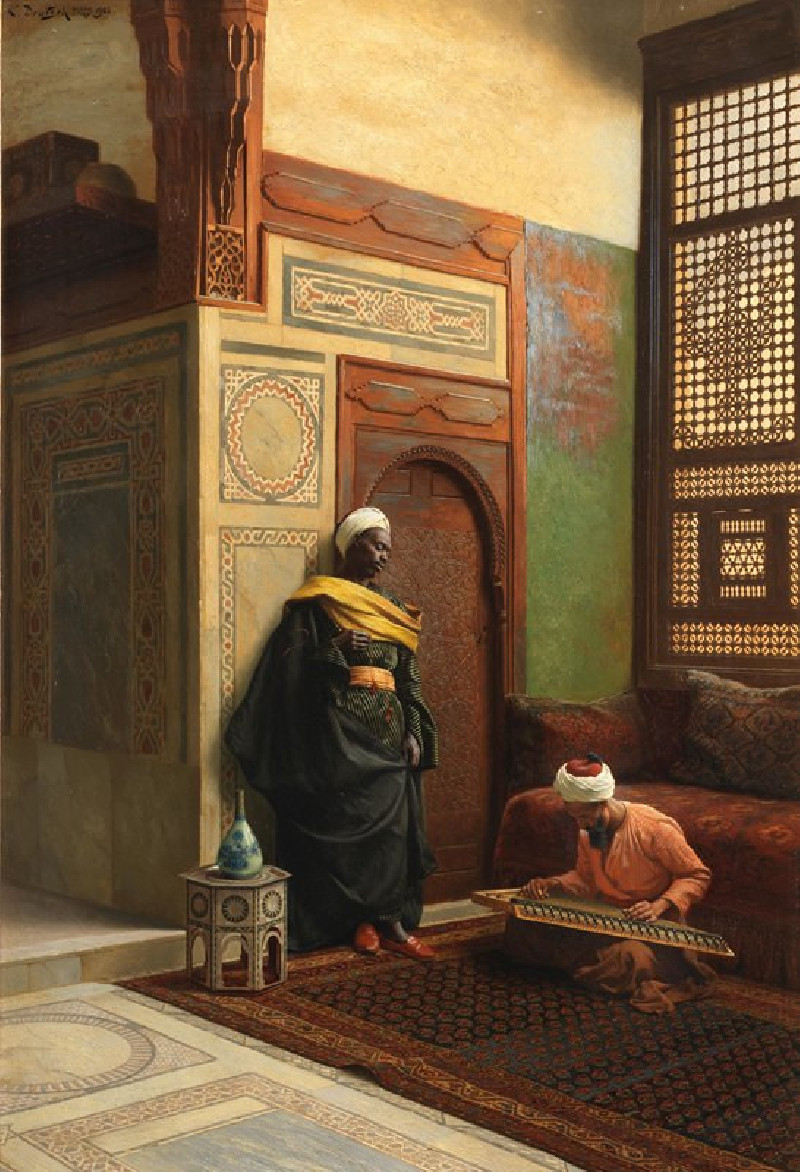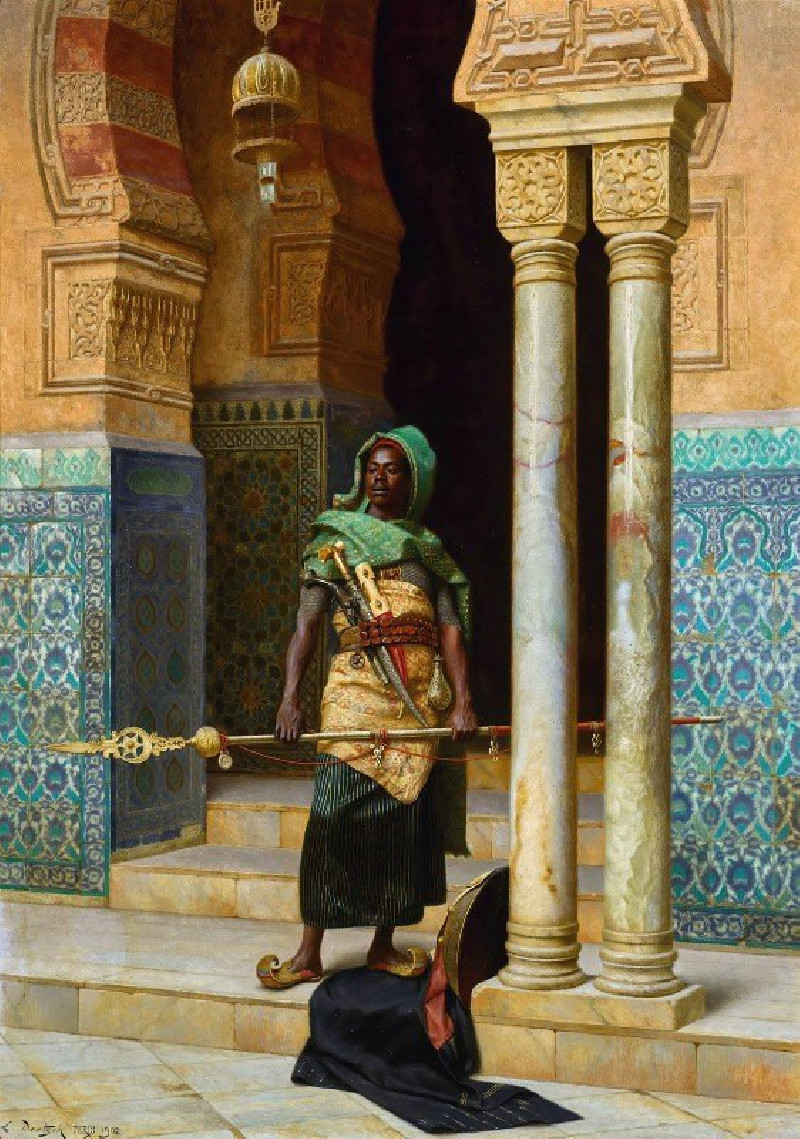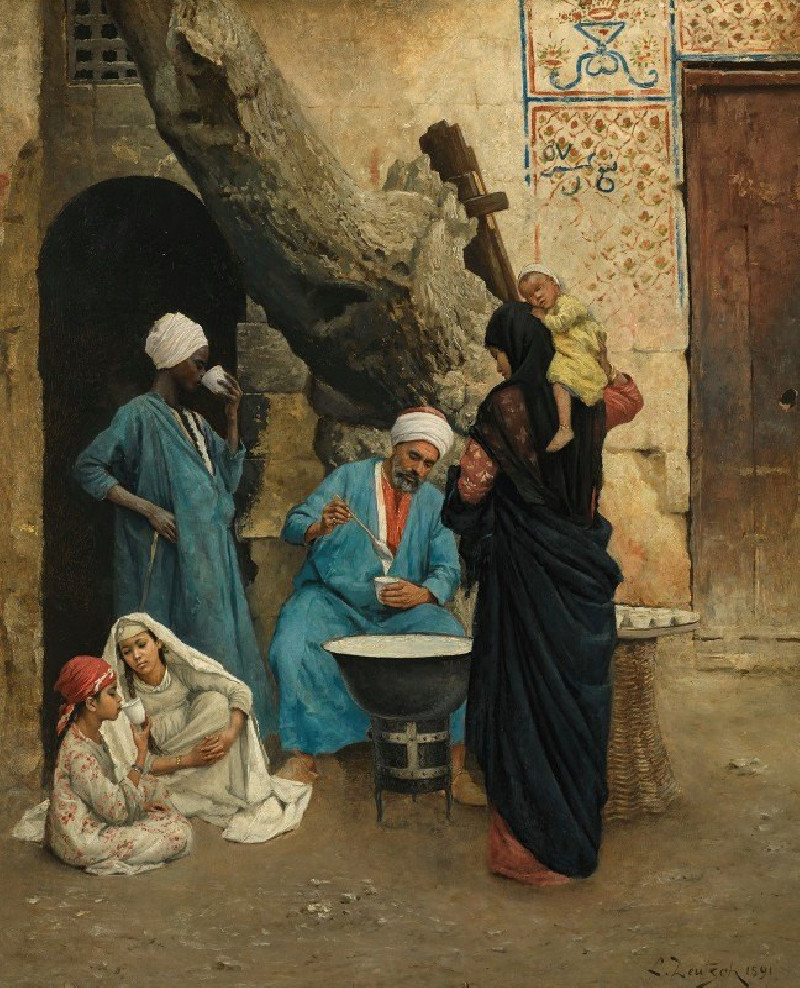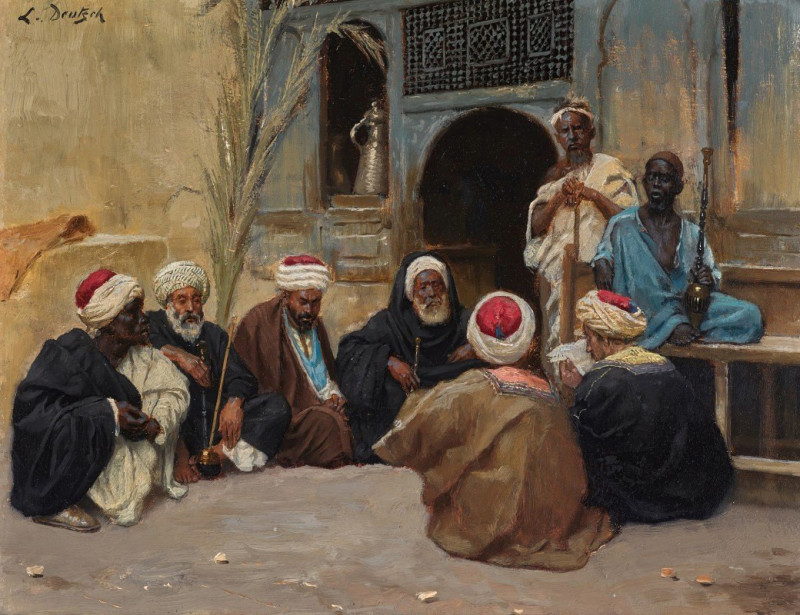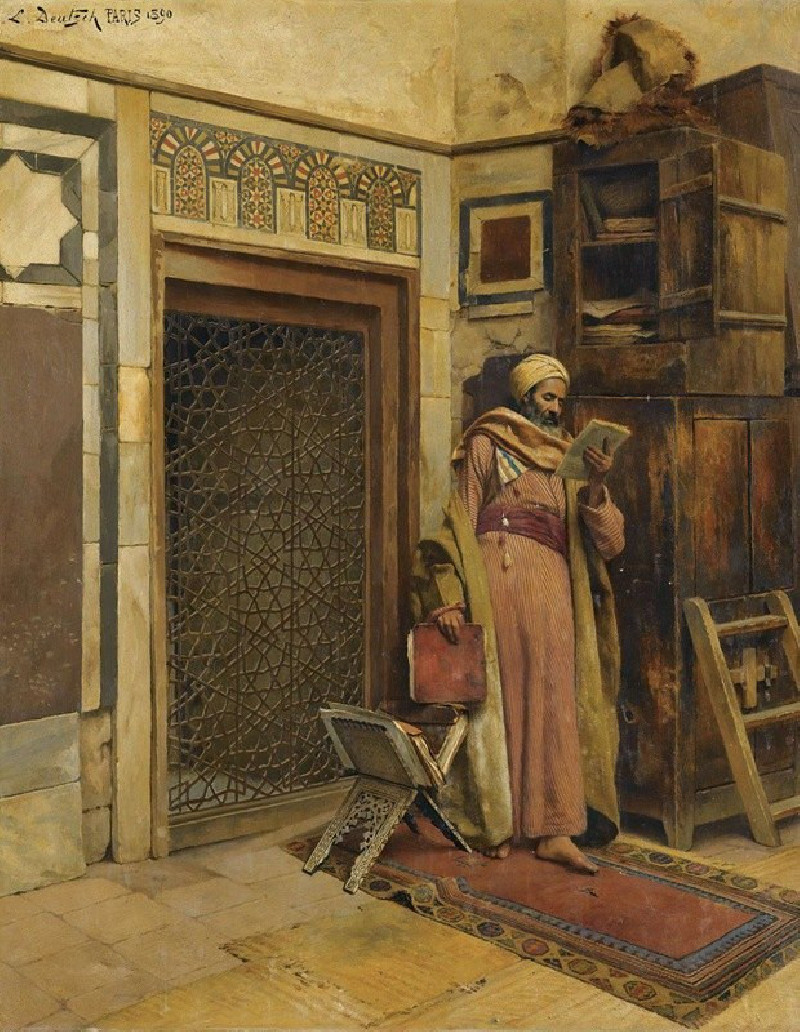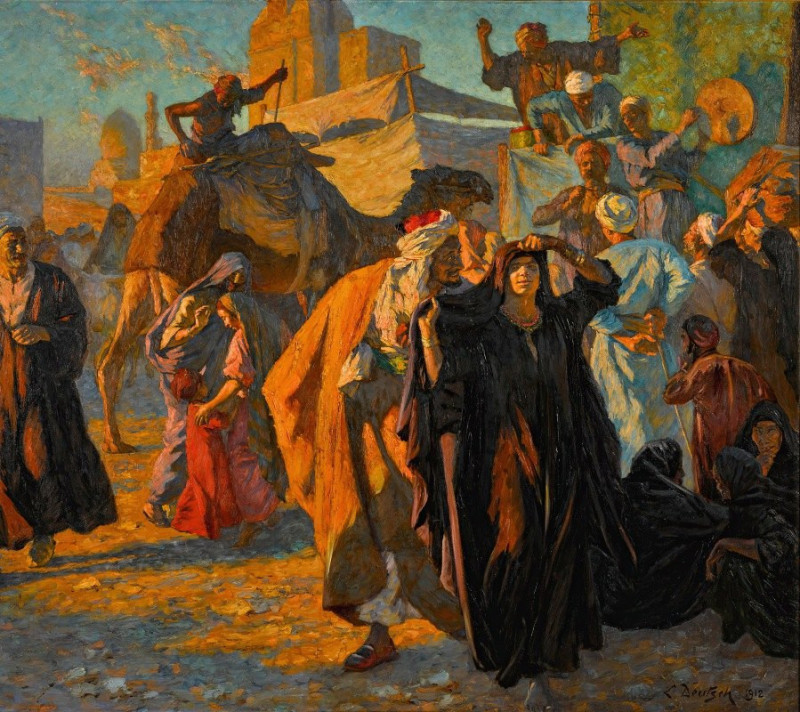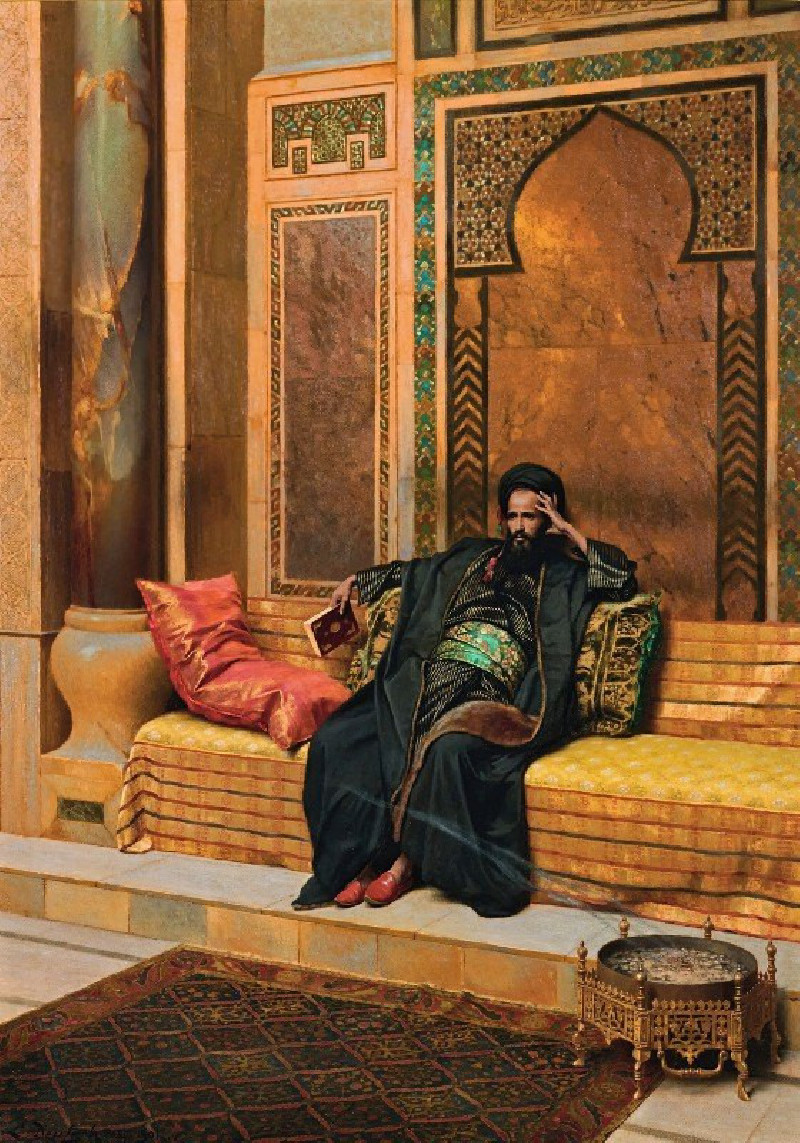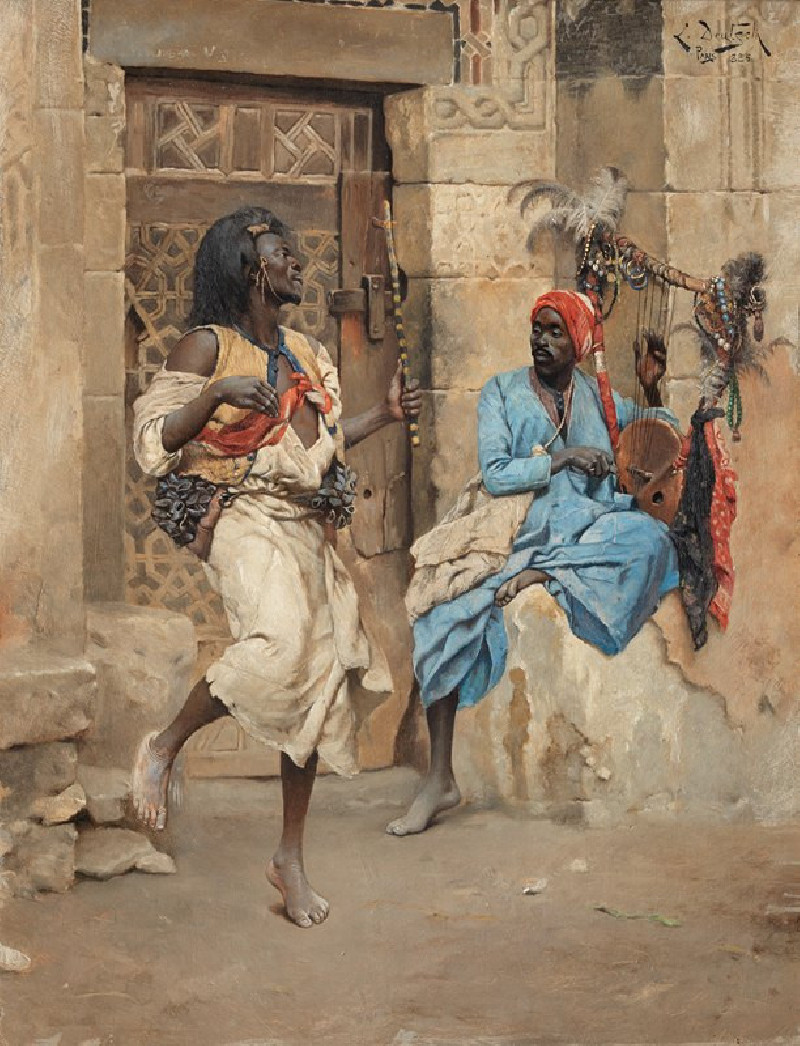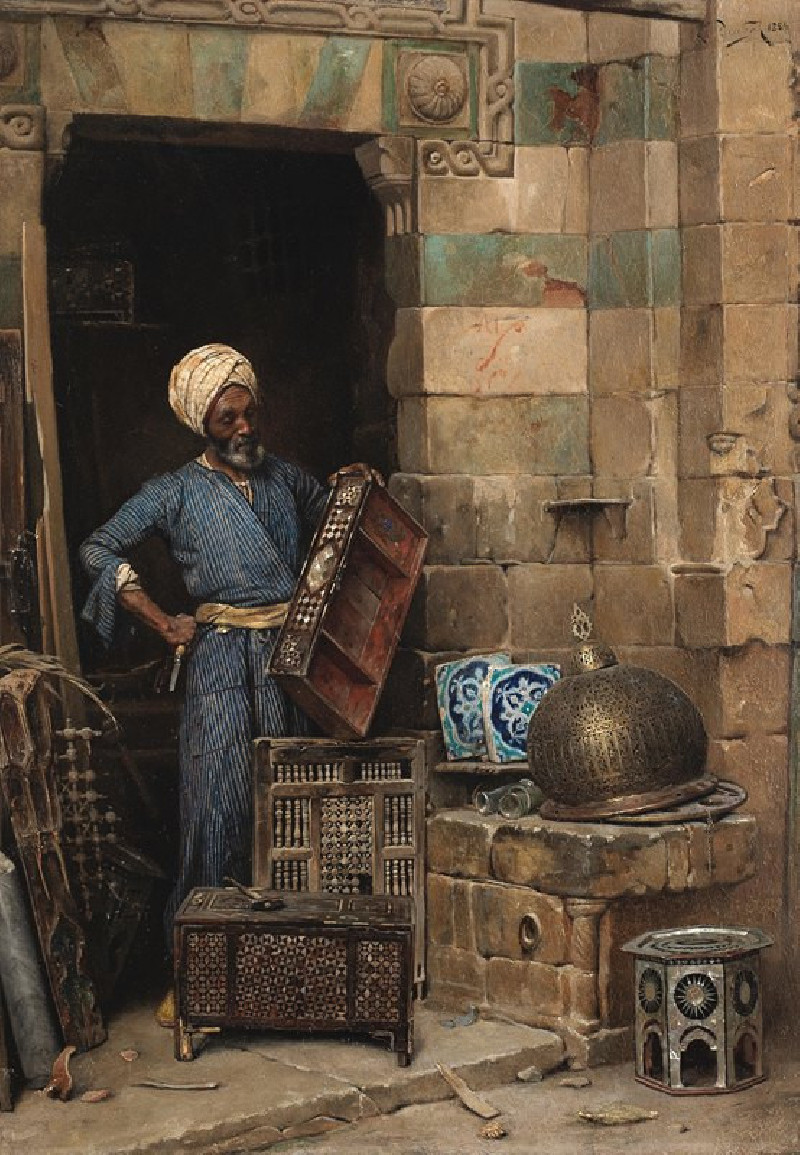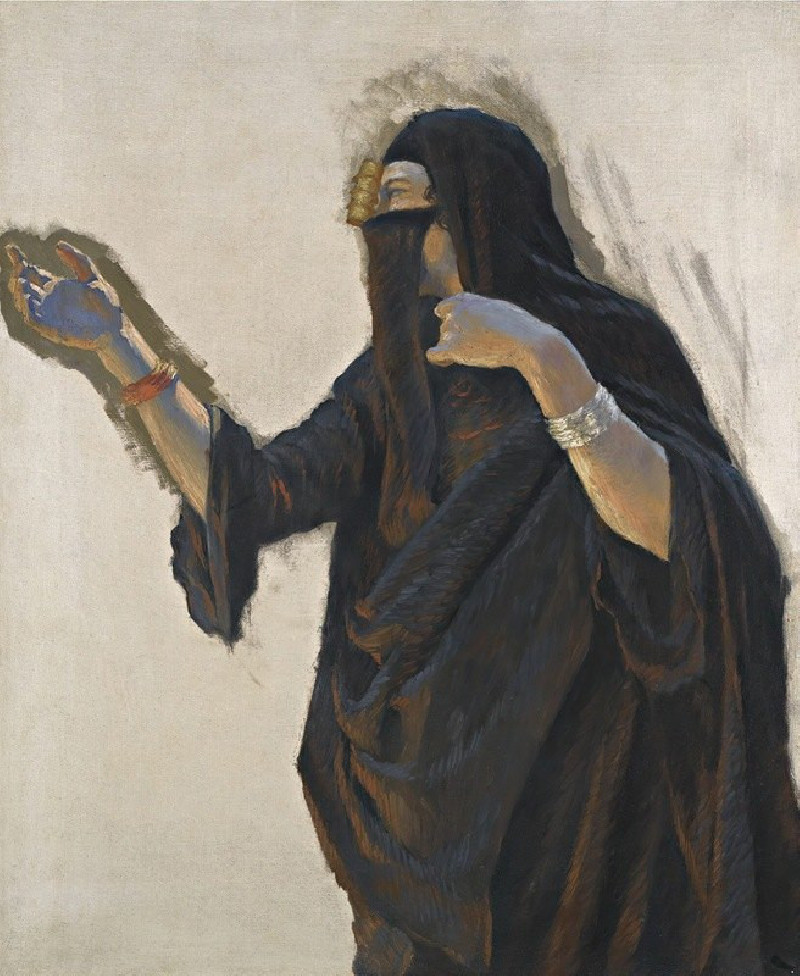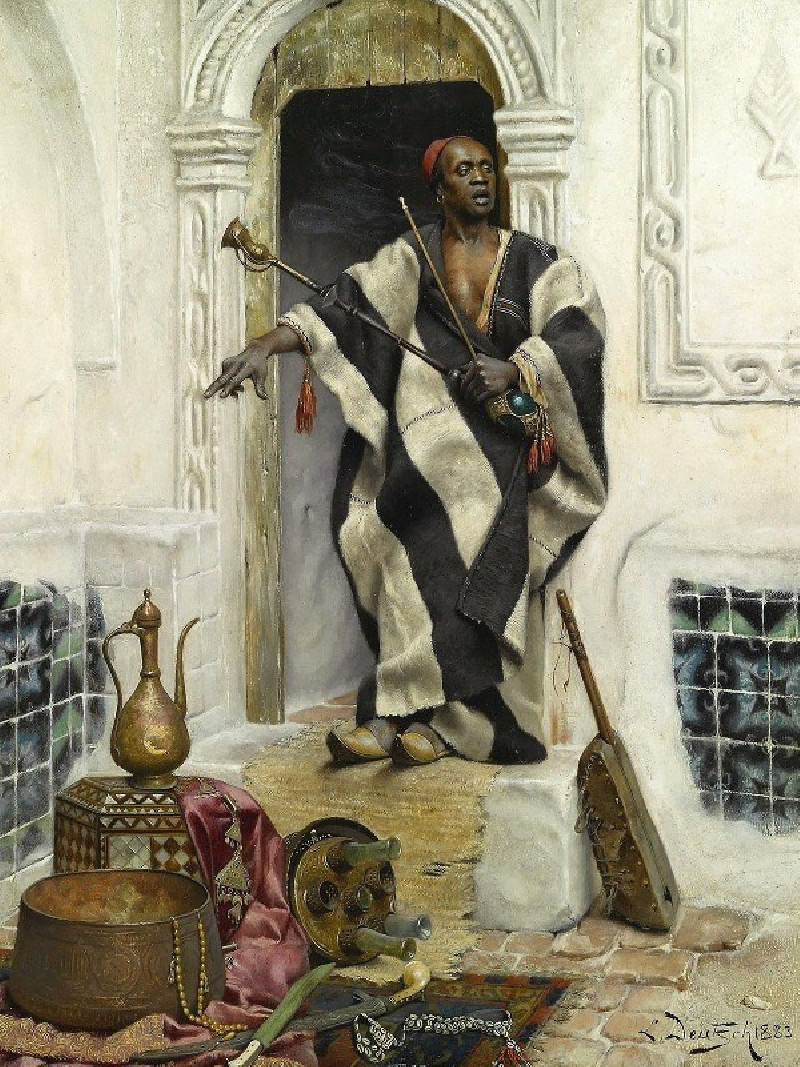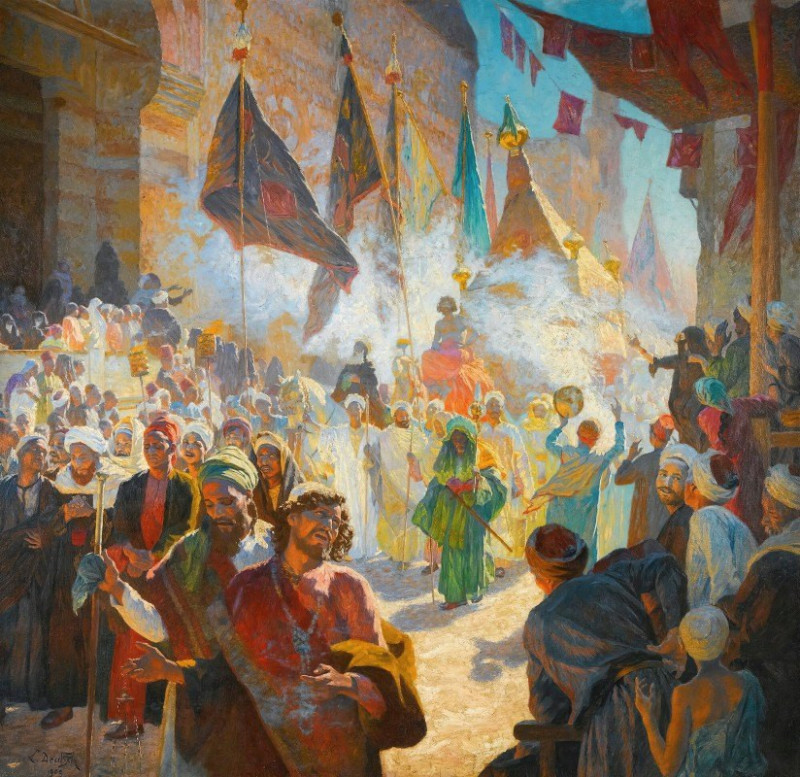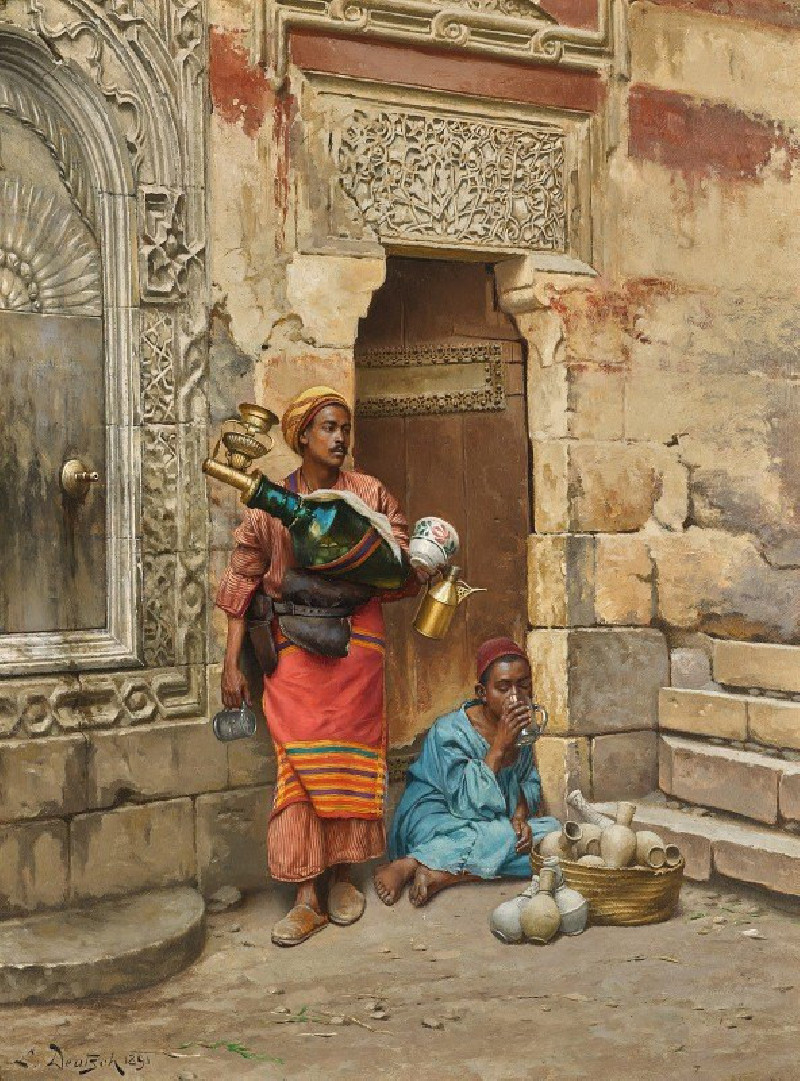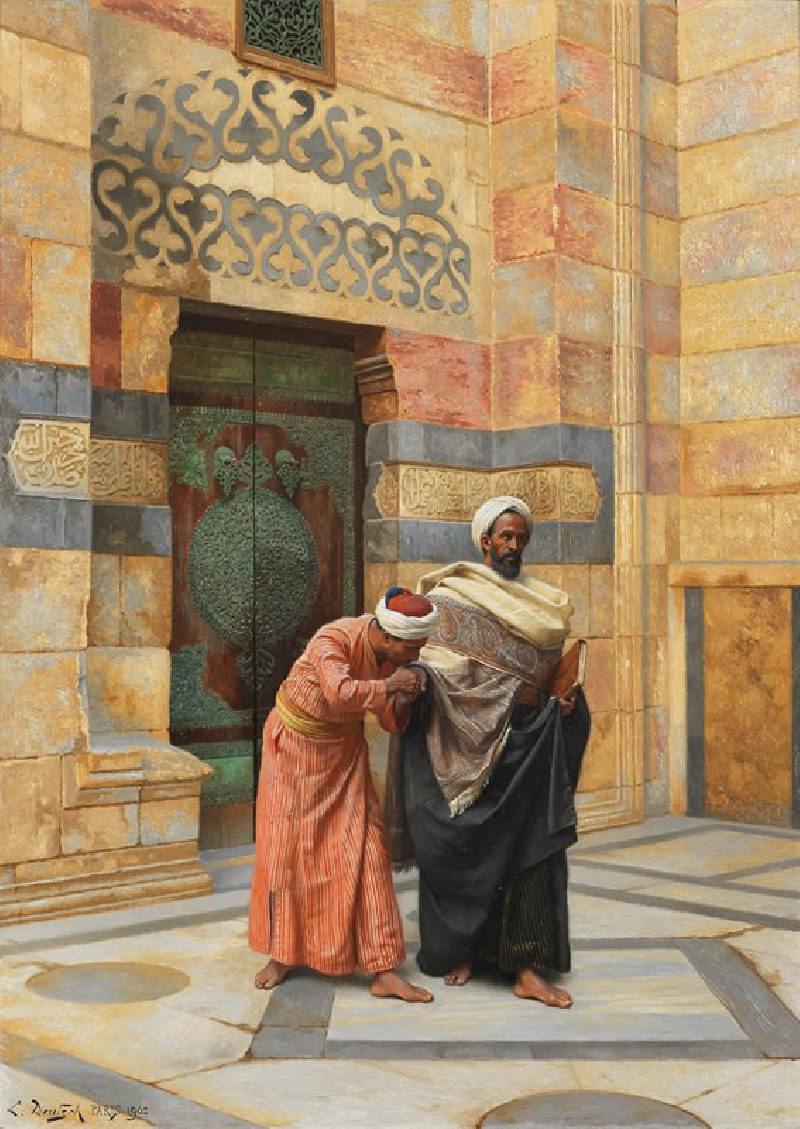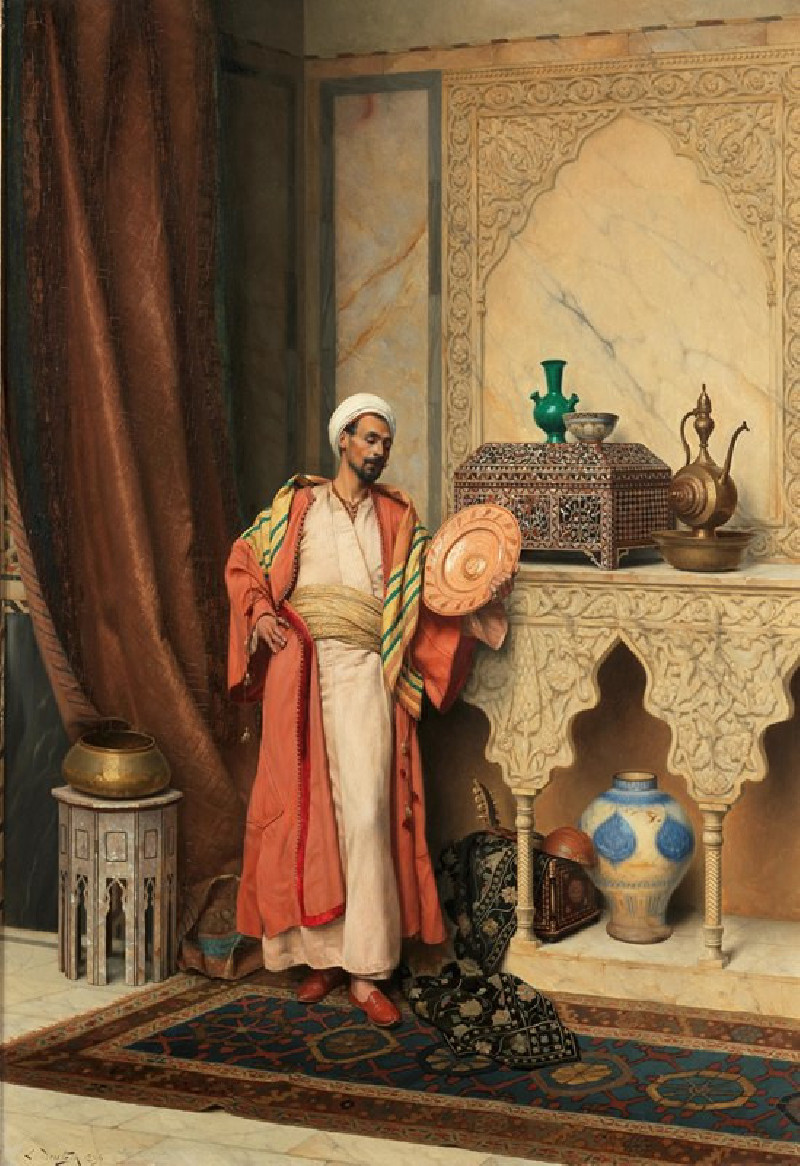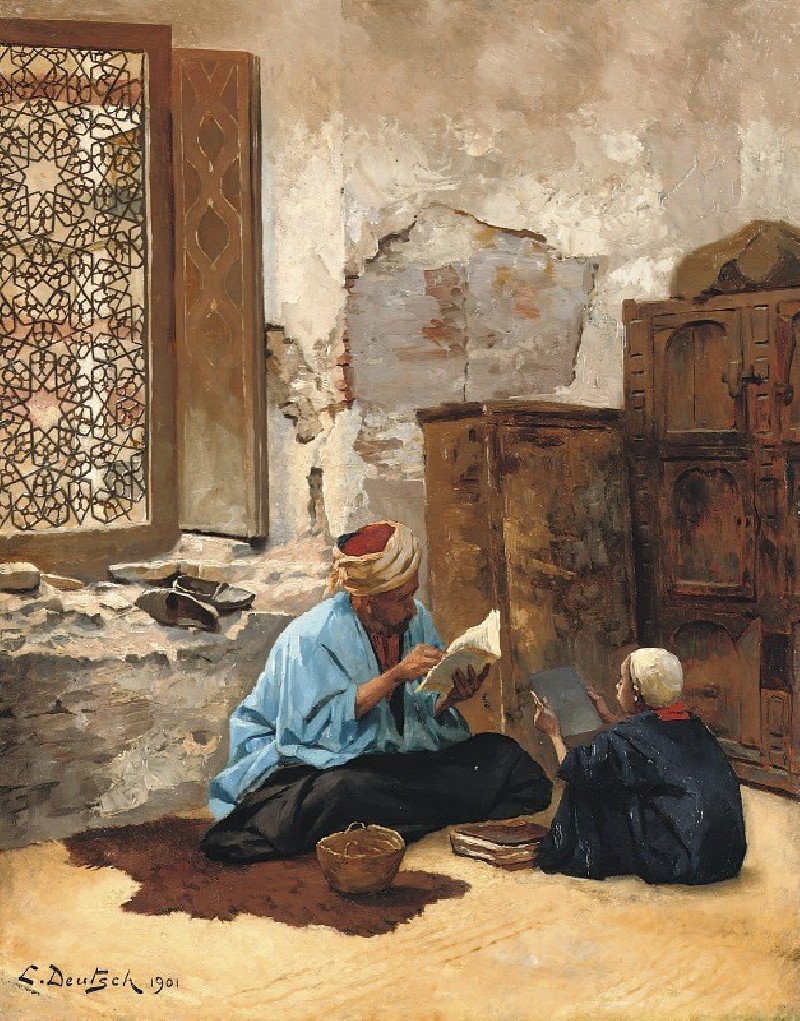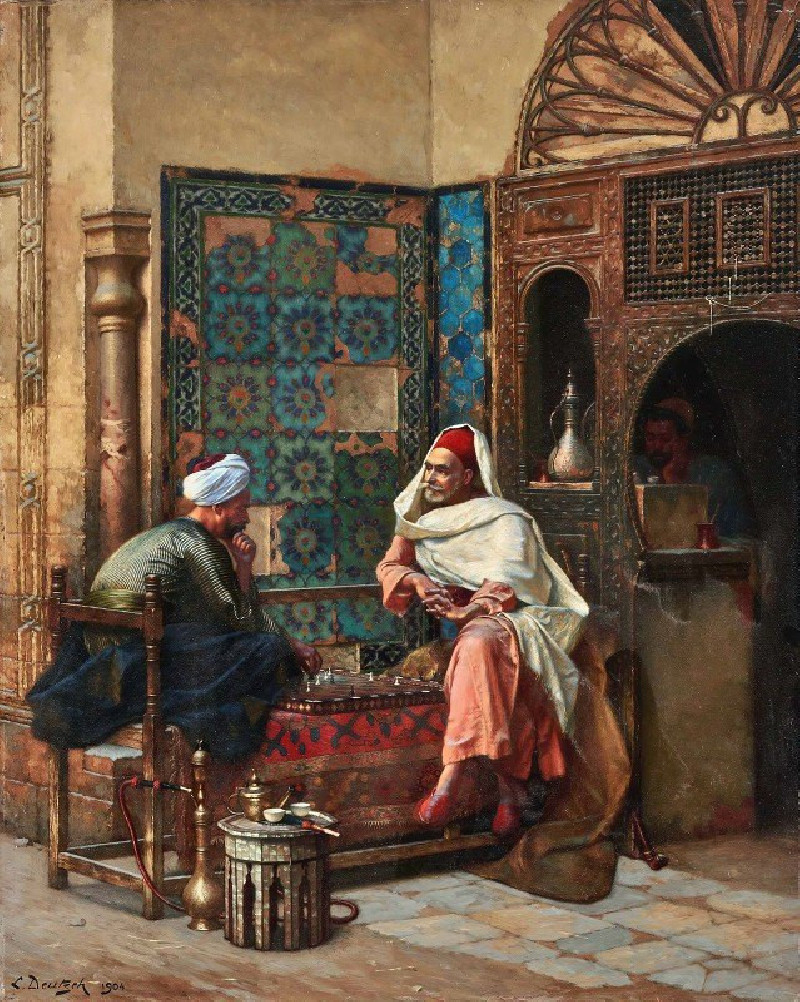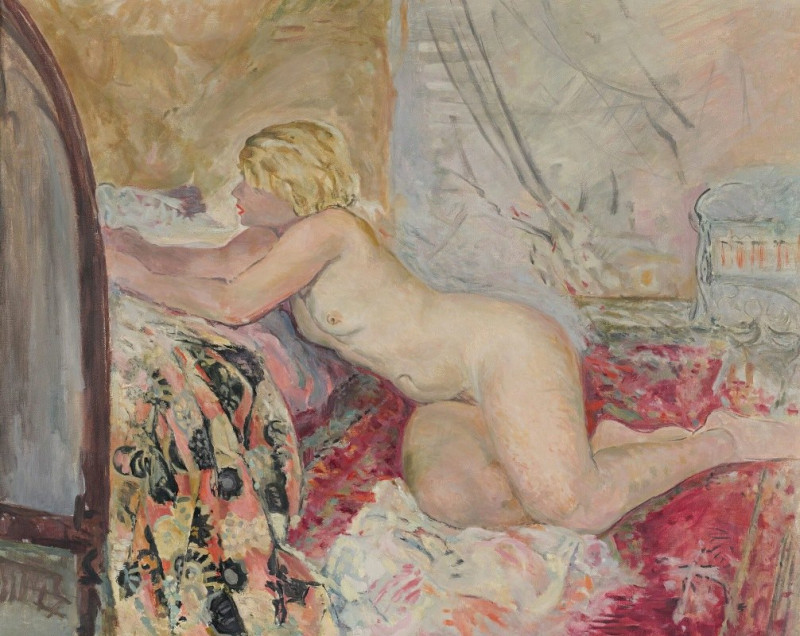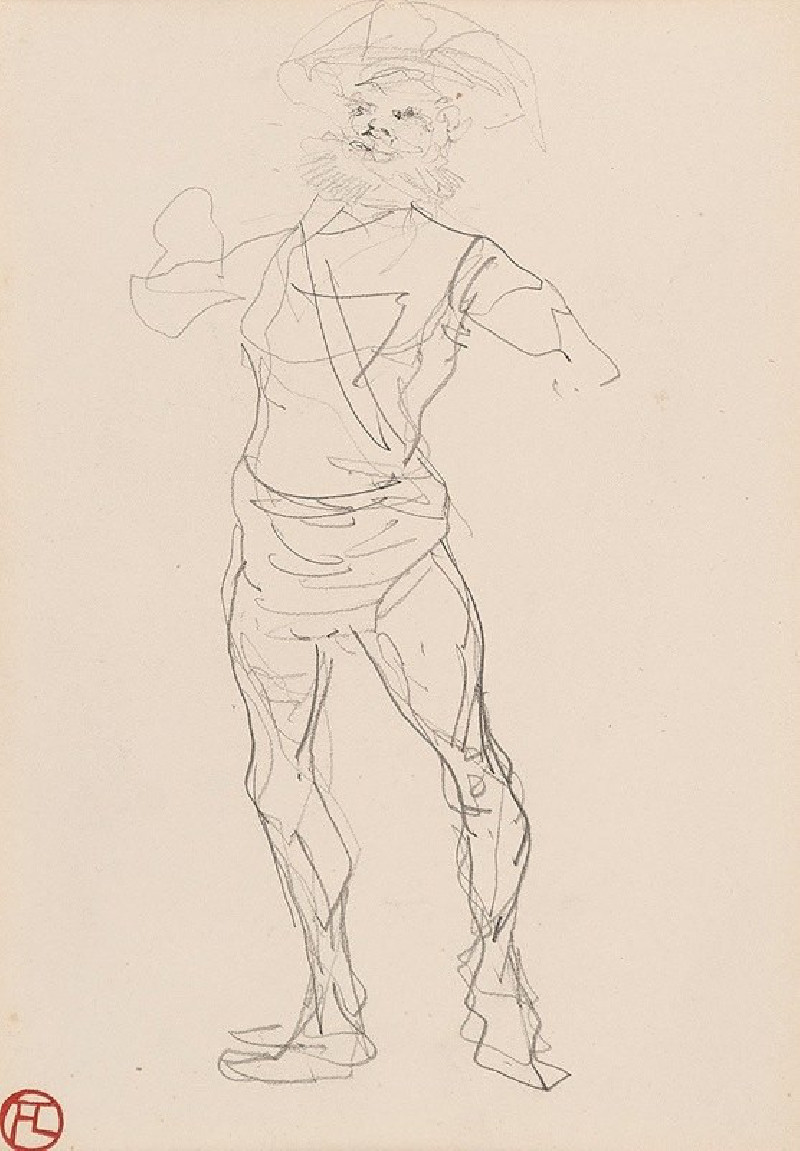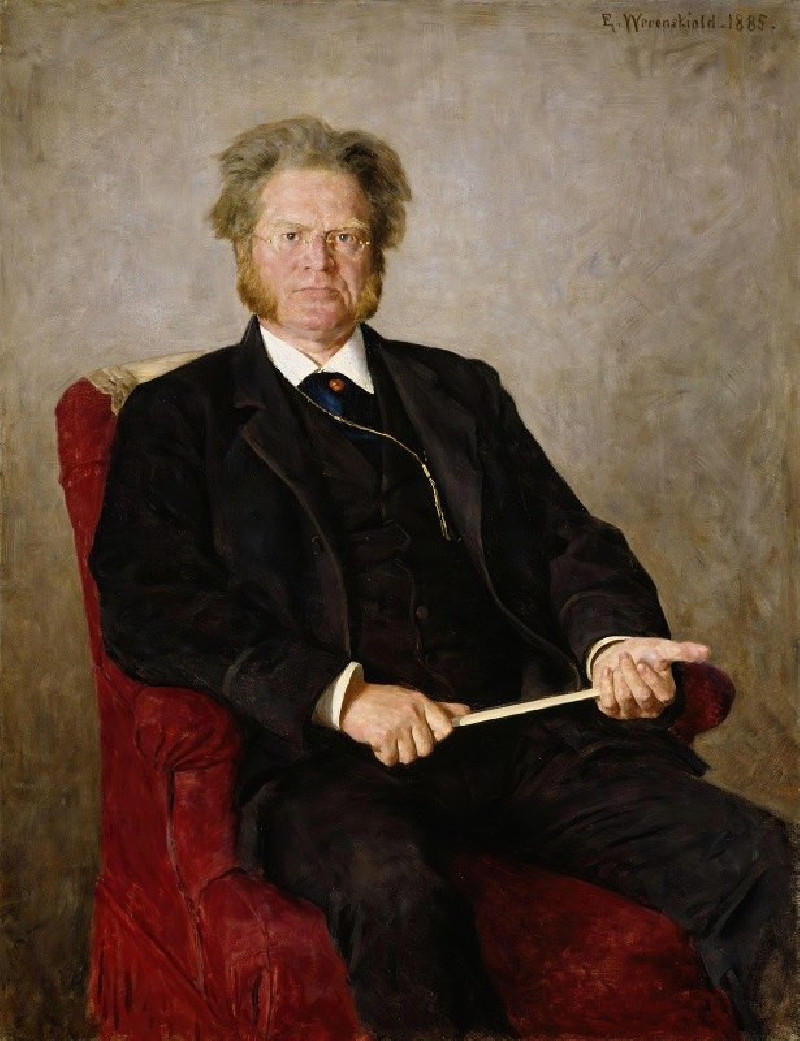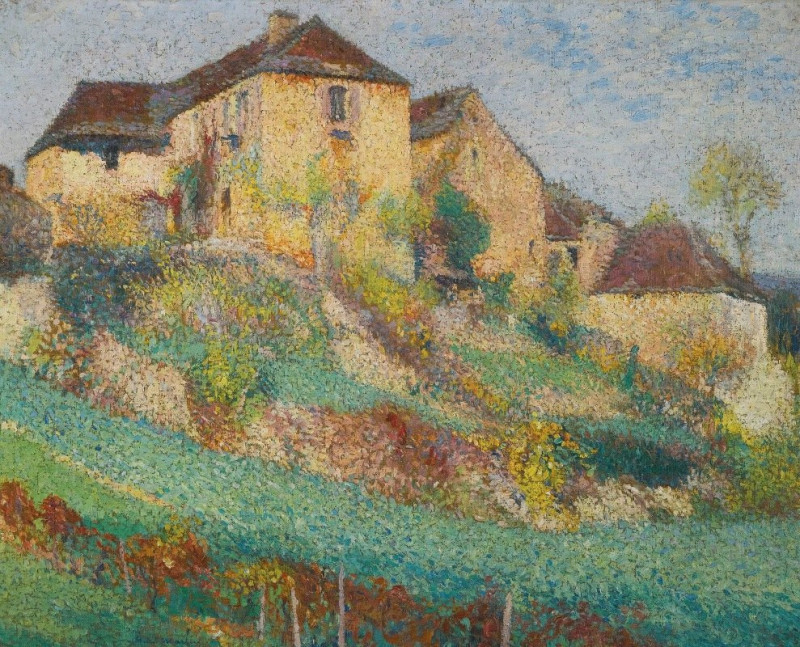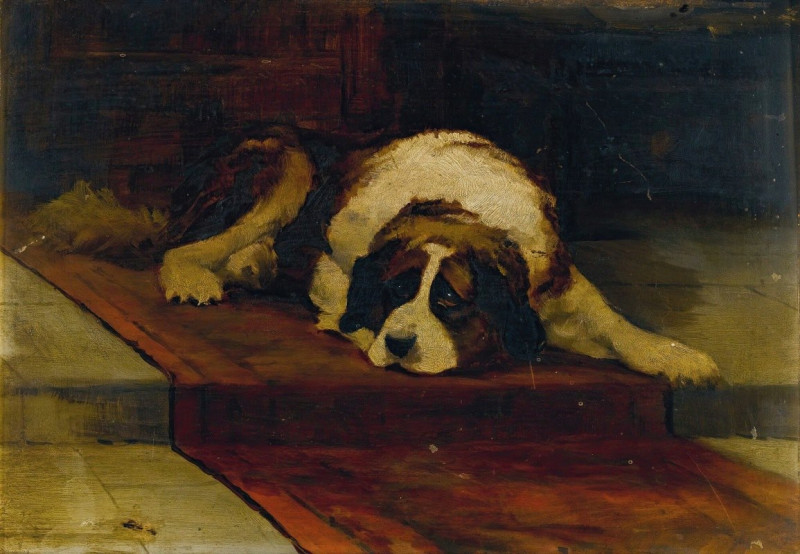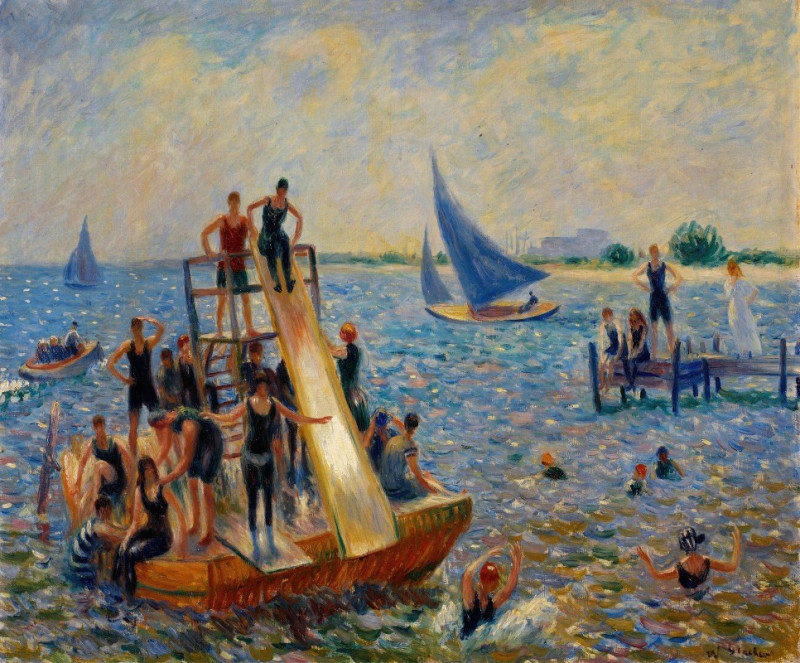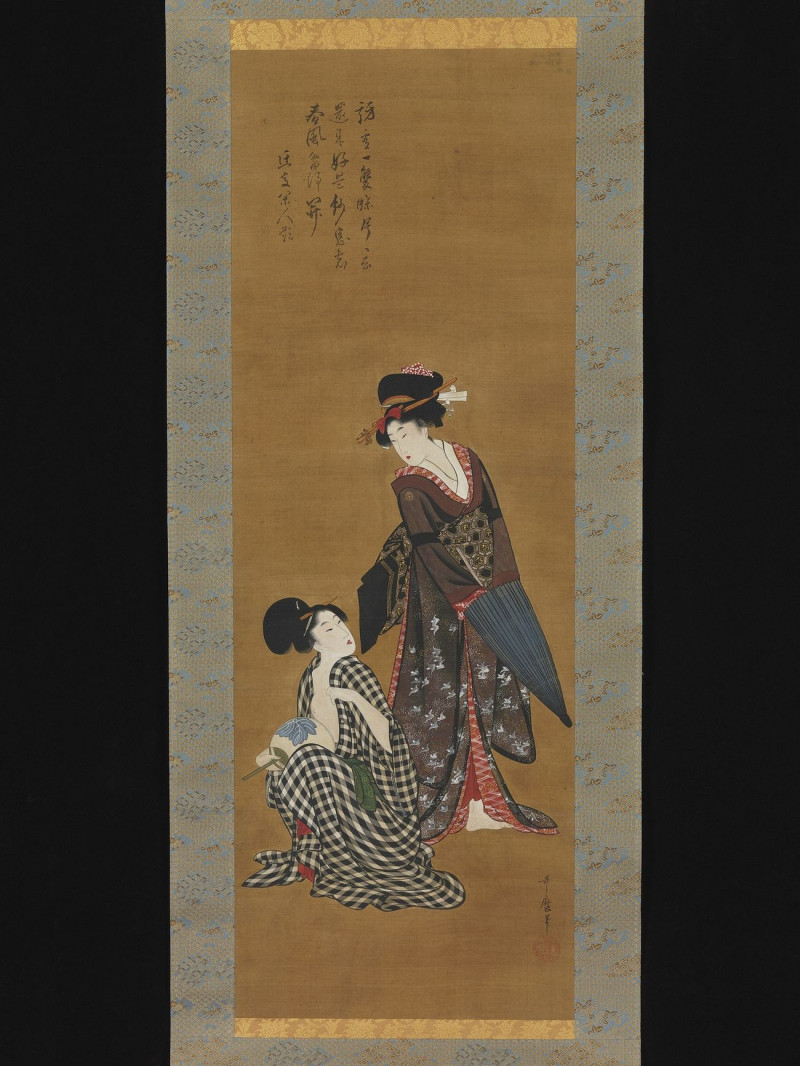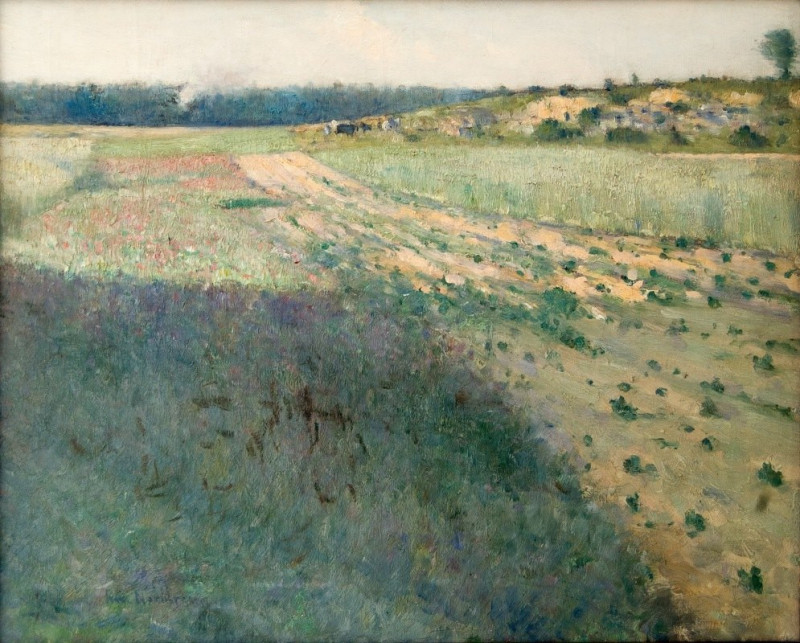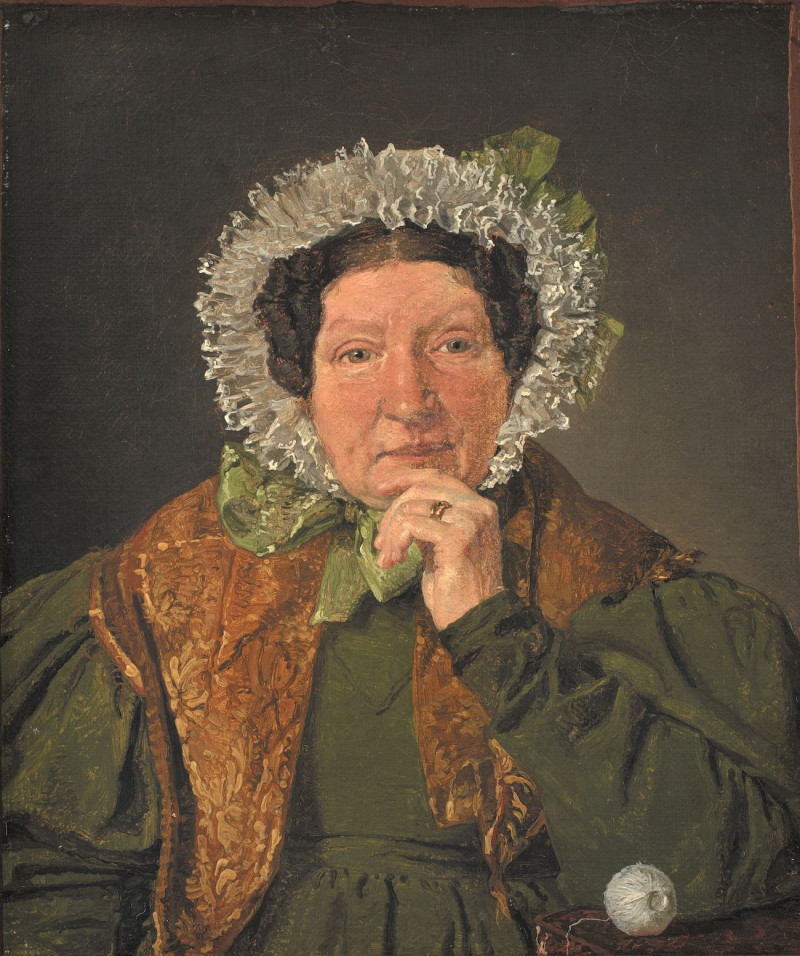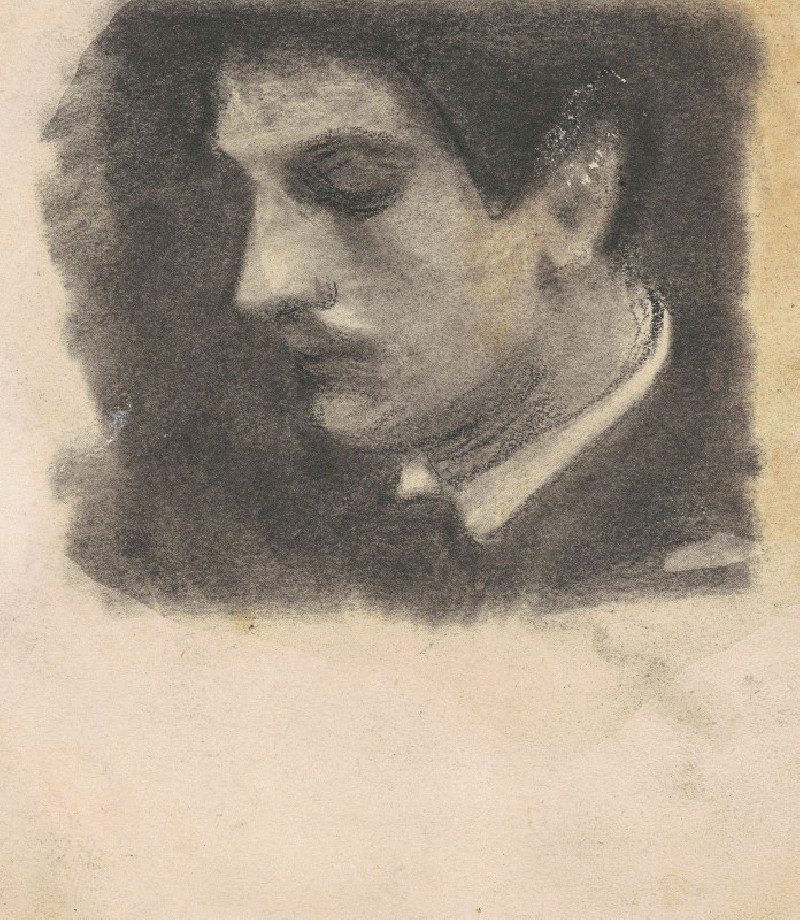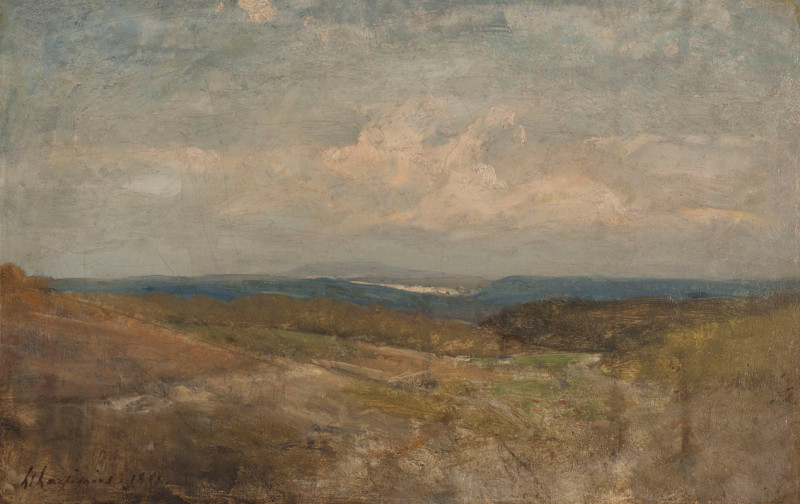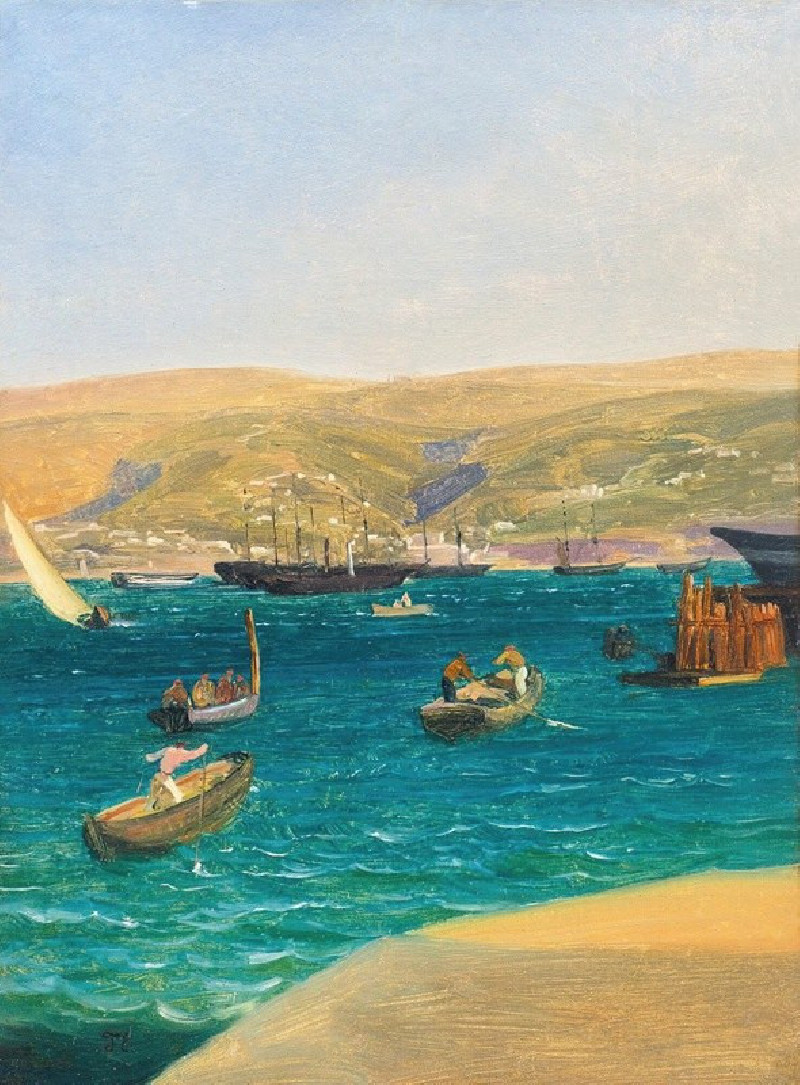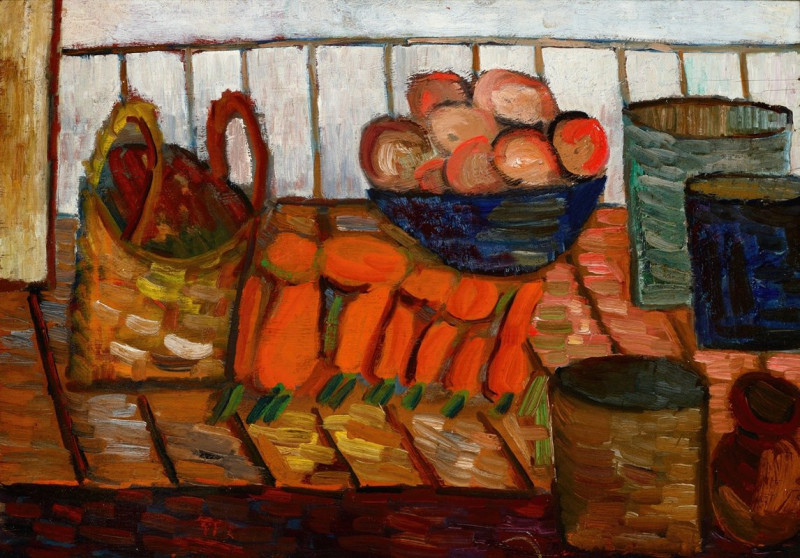The Qanun Player (1903)
Technique: Giclée quality print
Recommended by our customers
More about this artwork
"The Qanun Player" is an exquisite oil painting by Austrian artist Ludwig Deutsch, dating back to 1903. This captivating artwork provides a detailed glimpse into a serene moment of musical practice within a sumptuous Middle Eastern setting.The composition centers on two figures: a qanun player and a watchful standing figure. The seated musician, dressed in a soft pink robe, delicately manipulates the strings of the qanun, a traditional stringed instrument known for its rich, melodic sounds. His focused expression and the gentle placement of his fingers evoke the depth of concentration and skill required to master this instrument.Standing to the left, another figure exudes dignity and authority, adorned in a striking black robe with a luxurious yellow shawl wrapped around his shoulders. His posture, upright and commanding, contrasts with the seated musician, adding a dynamic element to the scene.The setting is richly detailed, highlighting Deutsch's meticulous attention to architectural and decorative elements. Intricate woodwork, vibrant mosaic tiles, and ornate geometric designs adorn the walls and floor, while a beautifully patterned carpet and an elegantly designed ceramic stool further accentuate the luxurious surroundings. The interplay of light and shadow, filtering through the ornamental window screens, bathes the room in a warm, golden glow, adding a sense of tranquility and timelessness to the scene.Through "The Qanun Player," Ludwig Deutsch not only showcases his skill in realism and detail but also perfectly captures a moment of cultural significance, reflecting the rich artistic and musical heritage of the Middle East.
Delivery
Returns
Ludwig Deutsch was an Austrian painter who settled in Paris and became a noted Orientalist artist.
Details of Ludwig Deutsch's life are obscure. He was born in Vienna in 1855 into a well-established Jewish family. His father Ignaz Deutsch was a financier at the Austrian court. He studied at the Vienna Academy of Fine Arts 1872–1875, then, in 1878, moved to Paris where he became strongly associated with Orientalism.

